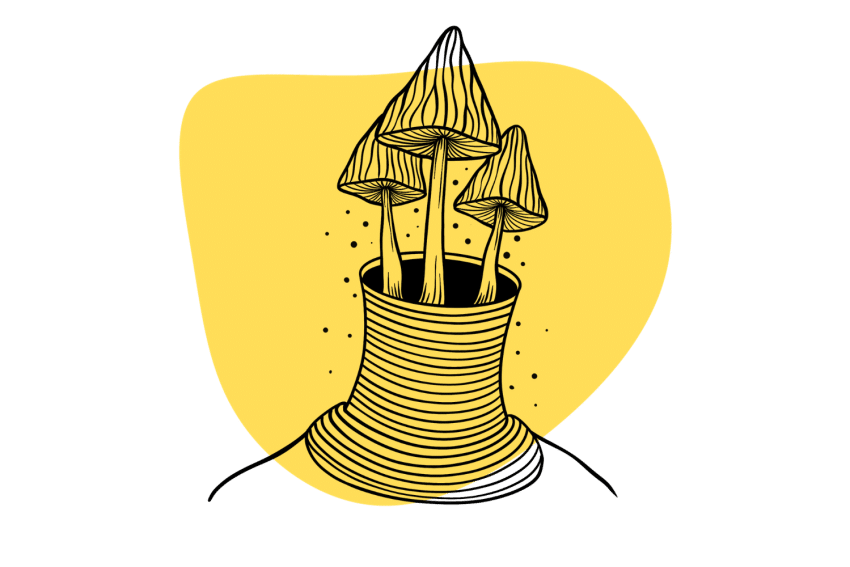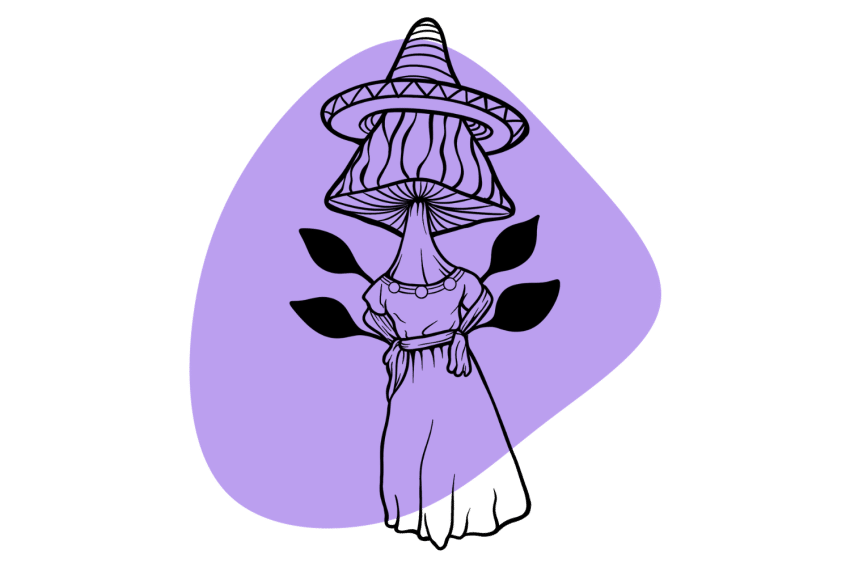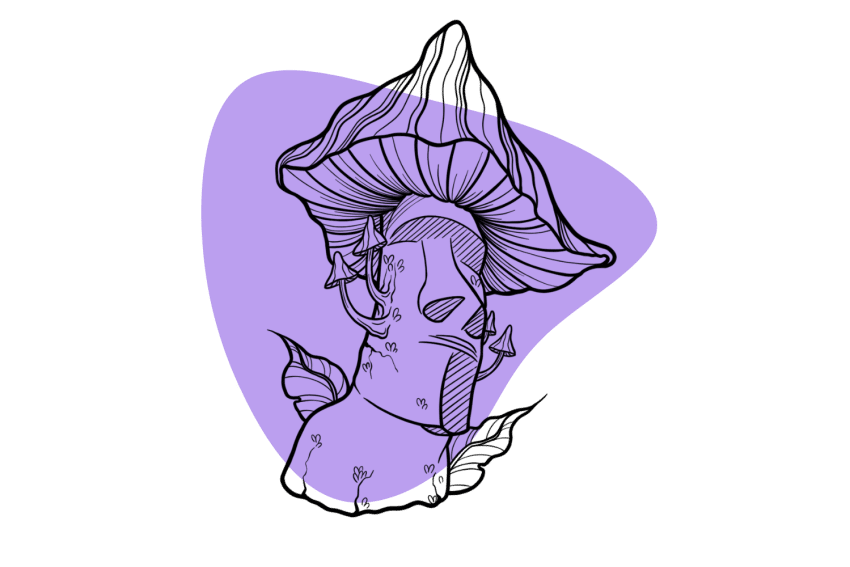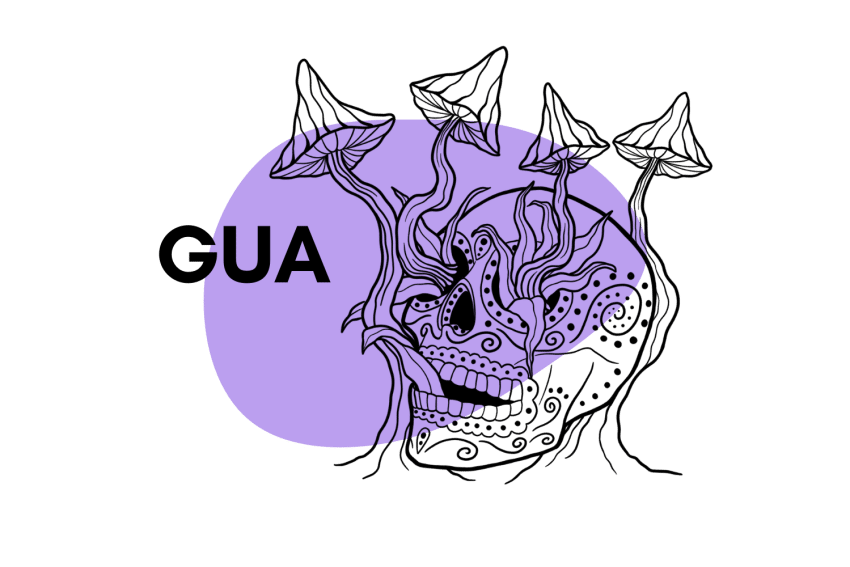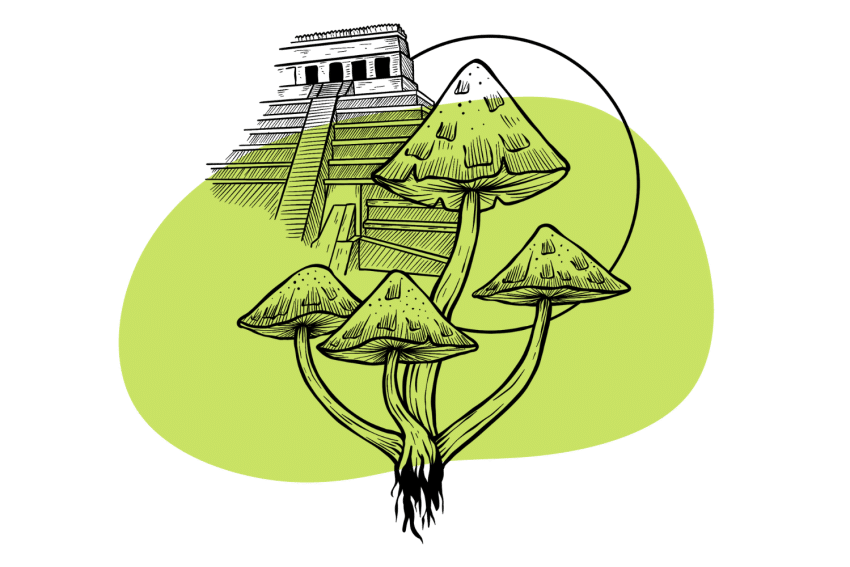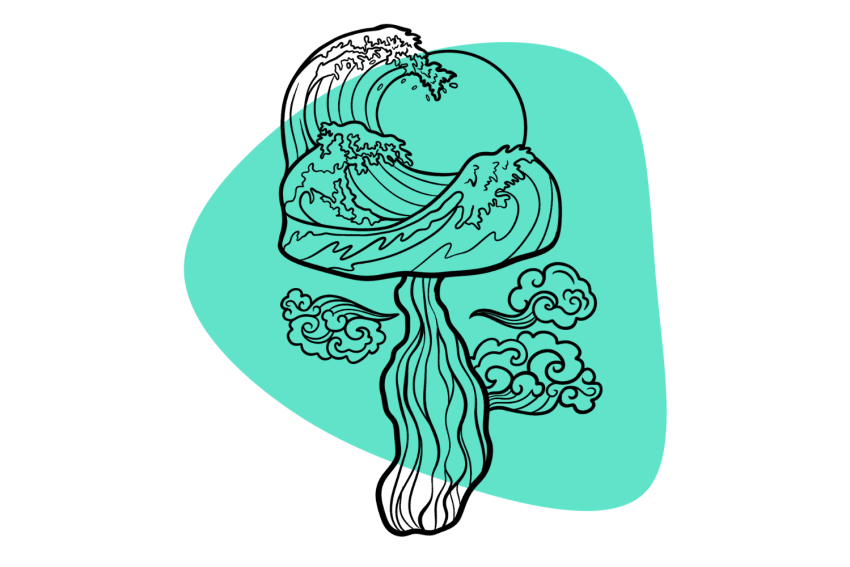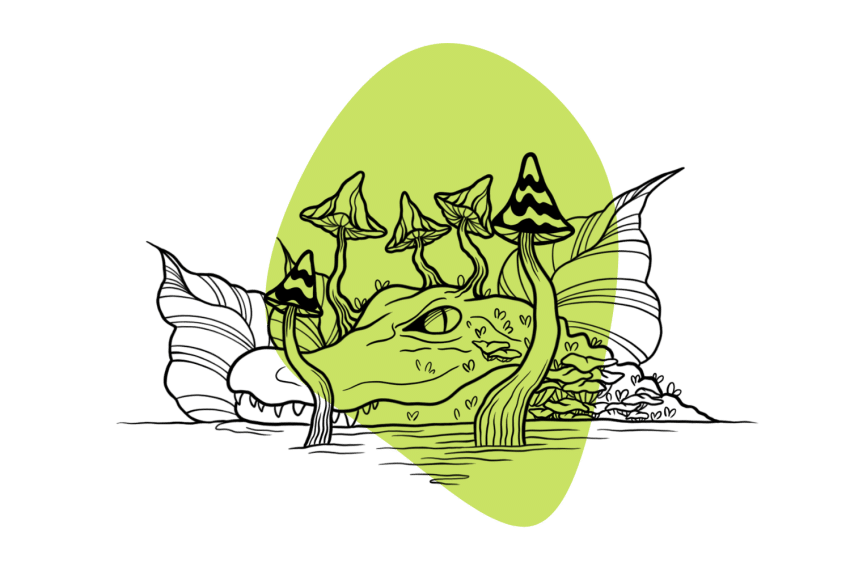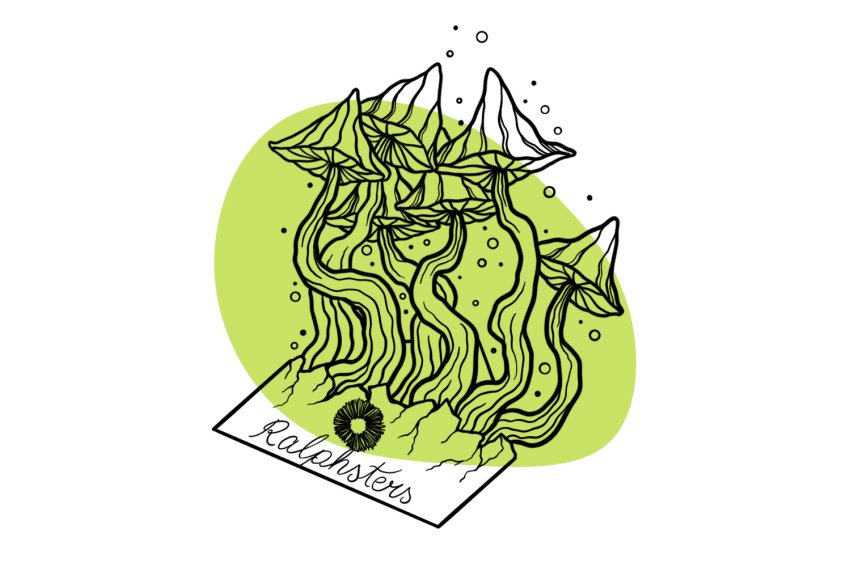Discovering Trans Envy: An Unplanned Creation
What happens when you leave two strains alone in the same fruiting chamber? 😳 Something quite phenomenal…
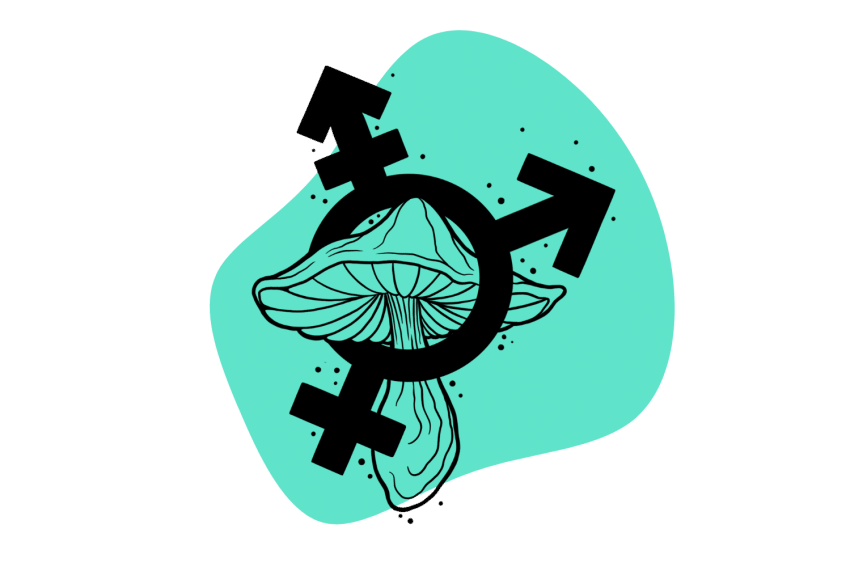
A new strain is born when two “mother strains” are combined in the same fruiting tray. Haploid mycelium from each strain combines to form new, diploid mycelial threads. These threads contain genetic material from both “parent” strains.
Spores Lab is credited with creating the Trans Envy strain and is likely responsible for bringing it to market.
Trans Envy shares characteristics with both Penis Envy and South African Transkei. Although the mushrooms don’t retain the famous phallic shape of Penis Envy, they share the notoriously thick white stems. Larger fruiting bodies and wider caps can be observed from the Transkei genetic side of the strain.
The vibration and stimulating experience of Transkei and the vivid visuals and intense euphoria of Penis Envy is preserved in the Trans Envy shrooms as well.
Like Penis Envy, Trans Envy is a light sporulator — this makes collecting spores for use in future grows more challenging, but also means you’ll end up with less of a mess if you don’t harvest your shrooms fast enough.
Trans Envy is becoming popular because of the large super-potent fruiting bodies it produces. It’s contamination-resistant, colonizes quickly, can cope with unoptimized growing environments, and is capable of producing several dense flushes before succumbing to mold growth.
Trans Envy is an interesting, highly-potent strain ideal for the beginner cultivator looking for something far stronger than the typical.
In this article, we’ll look at this strain’s qualities, history, and potency in more detail. We’ll also look at where to purchase Trans Envy spores and the best way to cultivate the strain.
Trans Envy Specs
| Potency | Very Potent 🤯 |
| Cultivation | Easy |
| Species | Psilocybe cubensis |
| Substrate Recommendation | Rye Grain, Wild Bird Seed |
| Sold By | Spores 101 (🇺🇸/🇨🇦), Miracle Farms (🇺🇸/🇨🇦), Sporeslab (🇨🇦), The Magic Mushrooms Shop (🇪🇺) |
History of the Trans Envy Strain
The Trans Envy strain results from two rye grain spawn bags — one with Transkei and one with Penis Envy — being unknowingly combined on a fruiting tray by workers at Spores Lab.
The resulting hybrid shrooms were carefully isolated, and through extensive cultivation, a new genetic was created. Trans Envy shows characteristics from both strains — “a happy little accident.”
Both mother strains are renowned for their potency and have a rich history.
Although there are hundreds of psychedelic mushroom species on the African continent, Transkei is one of the only strains of Psilocybe cubensis discovered in South Africa so far.
The original South African Transkei sample was collected at low elevations growing in dung under the shade of a tree close to the Indian Ocean in the Transkei region of South Africa. It was collected in the early 2000s, and the professionals that discovered it documented its location and growing conditions perfectly.
Penis Envy has a much more complex history. The original strain was part of the McKenna stock. Dennis and Terence McKenna collected the original Penis Envy sample while traveling the Amazon Rainforest in search of new strains of Psilocybe cubensis.
Penis Envy likely looked very different from what it does now because the strain we know has been genetically modified to alter its appearance and increase its potency.
Richard Gutierrez got hold of the original Penis Envy sample from the McKenna stock sometime during the 1970s and altered its traits through genetic manipulation. We now know the origins of this strain, but for decades, there was some hysteria surrounding the subject.
Originally, people believed Steven Pollock created the strain before his mysterious murder in 1981. Apparently, Pollock’s lifeless body was found holding a Penis Envy mushroom, and Richard Gutierrez received a sample shortly after.
We now know that this is, in fact, false after Hamilton Morris interviewed Rich G on a podcast.
Potency & Psilocybin Content
As with many strains that feature Penis Envy genetics, Trans Envy is highly potent and on a whole different level from many other Psilocybe cubensis strains.
It’s hard to know the exact total tryptamine content (psilocybin, psilocin, baeocystin, and various other tryptamines combined) of this shroom because reliable test data is yet to be published online. However, we’ve rated this strain as very potent — with an estimated total tryptamine content of more than 1.8%.
Trip reports suggest it has similar effects to the legendary Penis Envy strain — intense stimulation, euphoria, and both closed- and open-eye visuals are commonplace, even with doses as low as 1.5 grams.
We can also assume that this strain can consistently produce psilocybin levels above 1% by looking at the total tryptamine data from one of its mother strains.
The Penis Envy strain has historically done very well in the Oakland Hyphae Psilocybin Cup (a competition where cultivators submit shroom samples to test for psilocybin, psilocin, and other tryptamines and are then ranked).
Several samples of Penis Envy were submitted with tryptamine contents ranging from 0.70% to 2.90%. The strongest sample, grown by the cultivator Blackapple411, came third in the competition with a psilocybin level of 1.65%.
Genetic Relatives & Variations
Trans Envy is a hybrid of Penis Envy and South African Transkei. This strain has several genetic relatives. Here are a few of them:
1. Penis Envy (PE)
Penis Envy is one of the mother strains of Trans Envy. This powerfully potent strain is extremely popular for its notoriously high levels of psilocybin and psilocin and its iconic phallic shape.
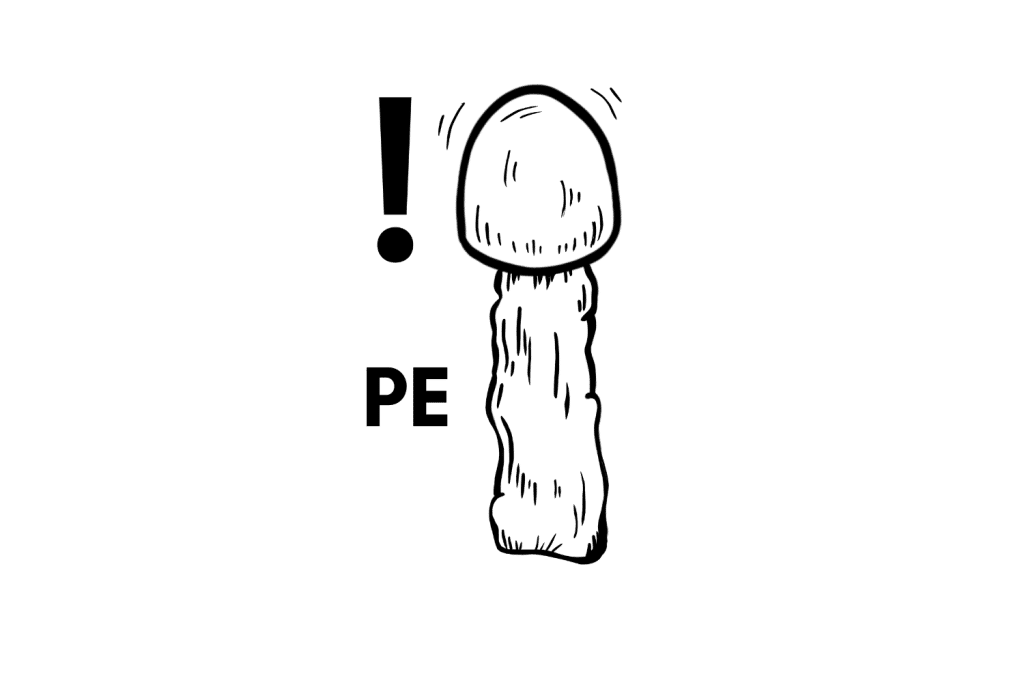
Penis Envy is possibly the most potent strain of Psilocybe cubensis. A common saying amongst the mushroom community goes, “a cube is a cube except for Penis Envy.” This saying came about because PE is unlike any other strain — it’s almost as if it’s entirely a different species.
It’s believed Dennis and Terance McKenna discovered the original strain in the Amazon Rainforest. Genetic manipulation brought us the strain we know today.
2. South African Transkei (TRAN)
South African Transkei is the other mother strain of Trans Envy. It also goes by the name “South African Cubensis” at some vendors.

This is one of the only Psilocybe cubensis strains in Africa. The country’s dry climate and extreme conditions are not ideal for Psilocybe fungi — this makes the Transkei strain special and unique.
The original sample was found growing at low elevations in a patch of dung under the shade of a tree in the Transkei region of South Africa (hence the name). It’s a strain of above-average potency that’s relatively easy and hassle-free to cultivate successfully.
3. Albino Penis Envy (APE)
Albino Penis Envy was isolated and commercialized by the team at the vendor Sporeworks. This is a non-pigmented version of the original Penis Envy strain. Albino Penis Envy retains the same exceptional potency as the original PE strain, and it has the potential to produce large yields over several prolific flushes.
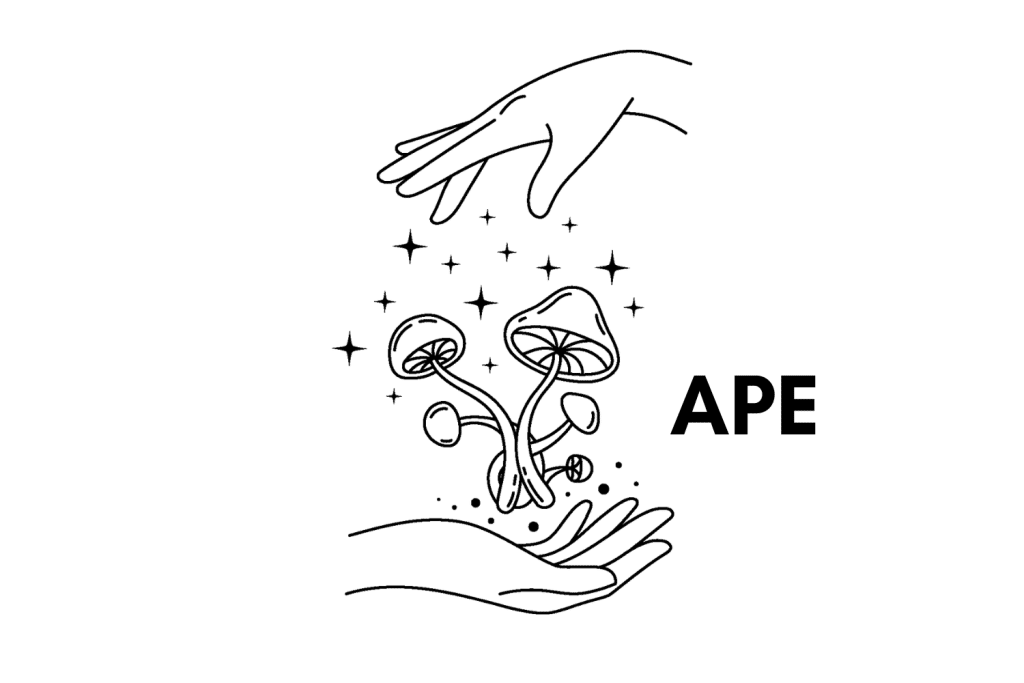
The difference between this strain and the original is its ghostly-white appearance. This makes it stand out from the rest of the “Penis Envy series” and definitely gives it some bag appeal.
Albino Penis Envy isn’t as easy to grow as the original strain. It’s more prone to aborts than the other strains in the series and not ideal for beginner cultivators with limited experience.
4. Penis Envy Uncut (PEU)
Penis Envy Uncut is an off-shoot of the original Penis Envy strain. It’s very similar to the original Penis Envy strain. In fact, side by side, you’d struggle to tell the difference between the two. The only difference between Penis Envy and Penis Envy Uncut is that the veils cover the gills.
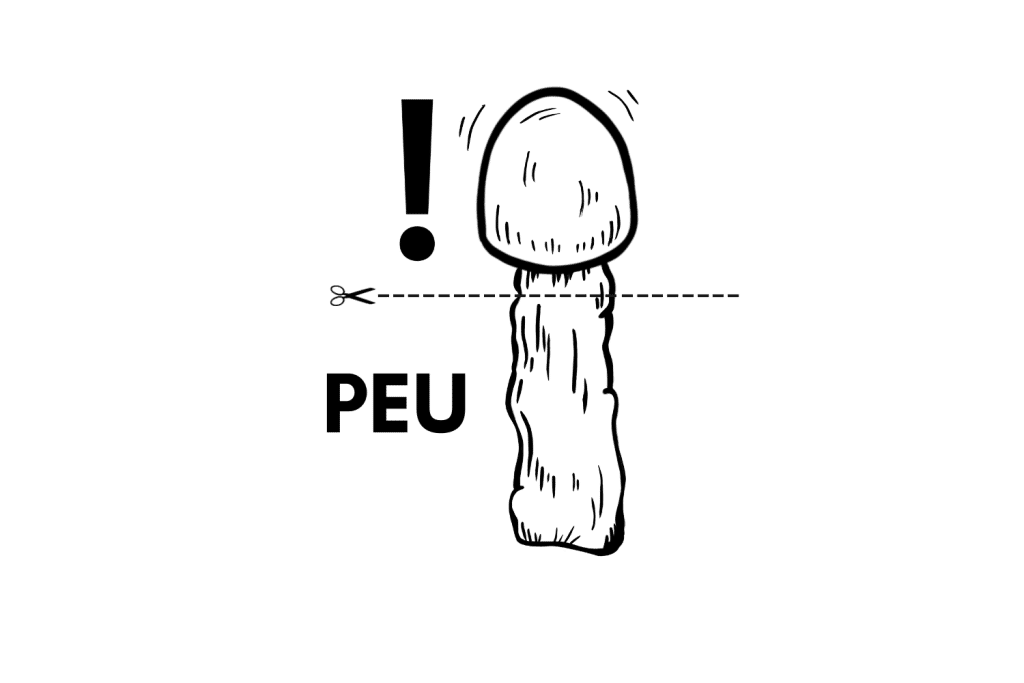
The veils of the Uncut variant rarely release from the underside of the cap. The gills don’t become exposed, giving it the look of an uncircumcised penis — hence the name.
Apparently, this variant of the Penis Envy strain is the strongest of the series. Some claim that the strain produces more psilocybin and psilocin than the original, but it does make smaller fruiting bodies. Don’t expect large yields, but potent mushrooms are all but guaranteed.
Where to Buy Trans Envy Spores
Trans Envy isn’t a particularly common strain. However, it’s possible to source Trans Envy genetics through sterile spore syringes in the United States and Canada. Unfortunately, Trans Envy has yet to make its way to Europe, and we haven’t found any reliable vendors that ship internationally.
Here are some of our favorite vendors to check out:
- If you live in the United States — MYYCO, Spores 101, Miracle Farms
- If you live in Canada — Spores 101, Sporeslab, Planet Spores
- If you live in Europe — The Magic Mushrooms Shop (🇪🇺), Shiny Spores (🇬🇧)
→ View all spore vendors & grow kit suppliers
How to Grow Trans Envy Shrooms
Trans Envy is surprisingly easy to grow for a super-potent strain of Psilocybe cubensis. It can be cultivated using the simple PF-Tek method.
Even a beginner can produce good results from this strain with its great contamination resistance and ability to thrive in unoptimized environments. PF-Tek is the easiest way to cultivate Psilocybe cubensis strains, and limited knowledge and equipment are needed to produce successful results.
Read through our cultivation guide to learn step-by-step how to cultivate shrooms using this technique.
Trans Envy does well in most substrates. Many cultivators have reported the best results when using rye grain or wild bird seed mixes. BRF (brown rice flour) cakes can also be used but don’t tend to perform as well as grains or seeds with this strain.
PF-Tek involves the injection of one or more sterile substrate-filled jars. Trans Envy spores are introduced to the jars, and then they’re left in a dark place to allow the mycelium to fully colonize the substrate.
Once the mycelium has developed fully, remove the cakes and place them into a simple fruiting chamber where they will begin to produce mushrooms. Harvest these as they reach maturity but before they drop spores, ensuring the colony continues to fruit.
Mushrooms will grow from the cakes until the colonies eventually succumb to mold growth.
Other Highly Potent Magic Mushroom Strains
Trans Envy is a super potent strain of Psilocybe cubensis. If you want a strain that will blow your socks off in terms of potency, Trans Envy is a good choice. However, it’s not your only option.
If you’re interested in other highly potent magic mushroom strains, definitely check these out:
1. Tidal Wave (TW)
Tidal Wave is a hybridization of Penis Envy and the B+ strain. Both of these two mother strains are renowned for their potency, and that definitely shows in the Tidal Wave strain.
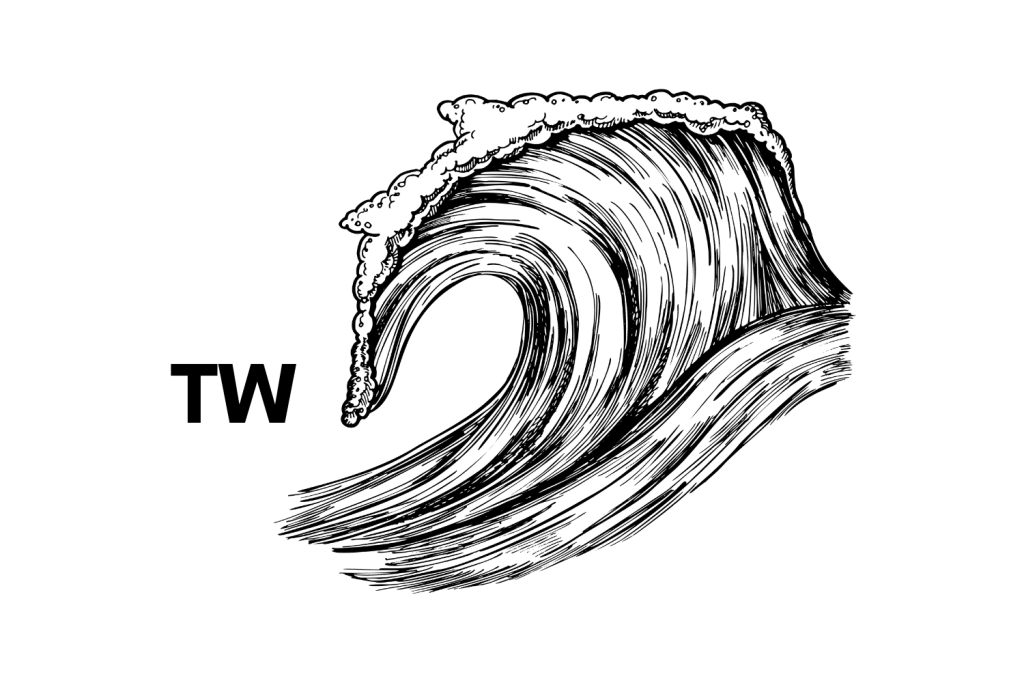
Tidal Wave won the Spring 2021 Oakland Hyphae Psilocybin Cup with a staggering total tryptamine content of 3.81%. That’s incredible for a strain of Psilocybe cubensis.
The mushrooms produced by this strain are short and fat. The stems are thick like Penis Envy, and the cap is wide and golden-brown like the B+ strain. This isn’t the easiest strain to cultivate, but for the intermediate grower with a bit of knowledge on the topic, the challenge is well worth the reward.
2. White Rabbit (WR)
White Rabbit is an albino strain. It results from the cross-cultivation of Moby Dick and Penis Envy — two notoriously potent strains. A group of cultivators from Holland developed it. The mushrooms are entirely white from stem to cap and medium in size.
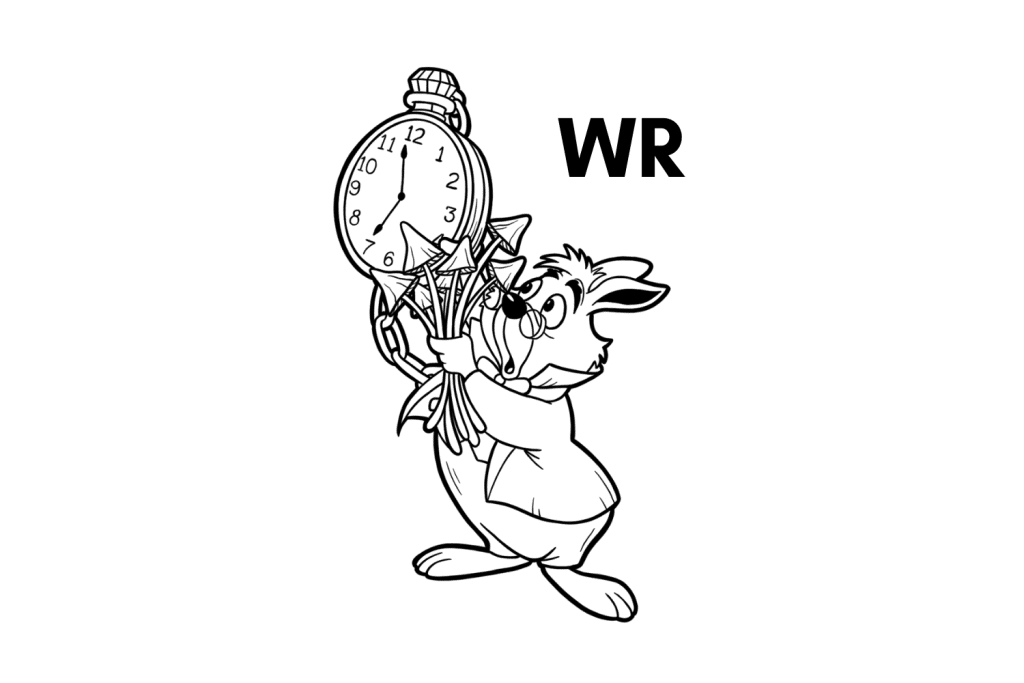
Surprisingly, White Rabbit is relatively easy to grow. It has excellent contamination resistance, colonizes quickly, and fruits well. Several flushes of healthy white shrooms are possible before the mycelium succumbs to mold growth.
This potent albino could take on the likes of Tidal Wave for “the strongest cube” title if put in the hands of the right cultivator.
3. Treasure Coast (TC)
Treasure Coast is a highly-potent Psilocybe cubensis strain. This is a relatively sensitive strain, and the overall potency will vary depending on the conditions in which it’s grown and the substrate it’s cultivated on.
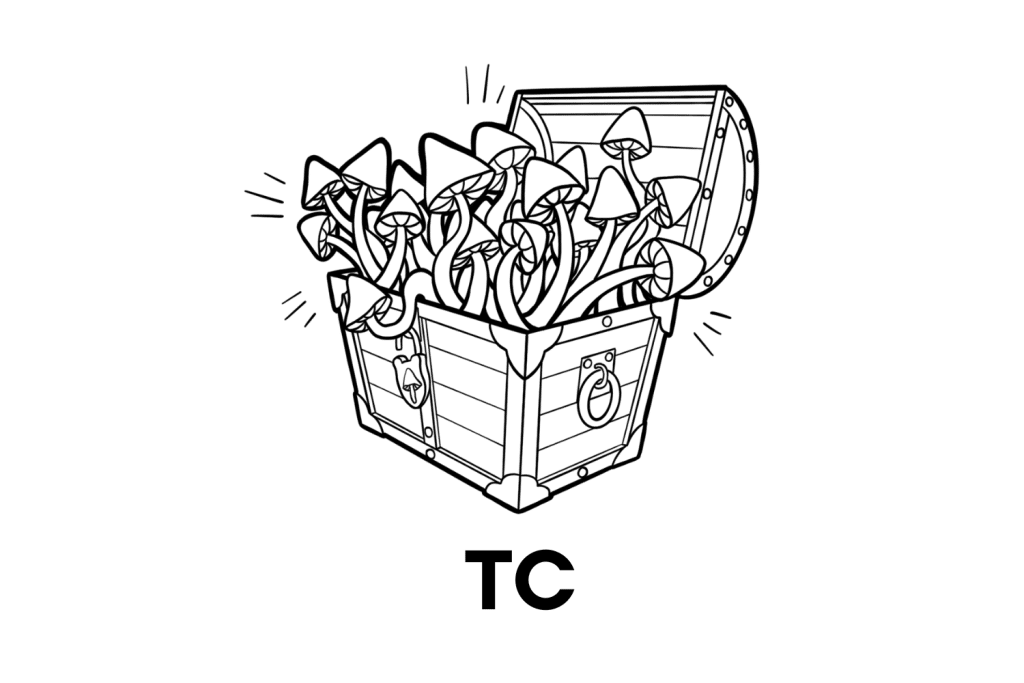
It’s prone to aborts, isn’t particularly contamination resistant, and has to be grown in perfect conditions. It’s safe to say that Treasure Coast isn’t one for the beginner grower, but it can be a very rewarding strain for the experienced cultivator that’s up for a challenge.
The mushrooms have thick, long, white stems and rounded caps with a tan color. The caps often lighten to a golden color as they mature and open when the shrooms begin to sporulate.
Strains vs. Species: What’s the Difference?
Trans Envy is a genetic variant of the species Psilocybe cubensis. The P. cubensis species contains hundreds of these genetic variants — we call these variants strains.
So how can a single species have so many different-looking mushrooms with altering qualities? Are they not just different species?
There are hundreds of different species of psychedelic mushrooms. Of course, P. cubensis is one of these species. What defines a species is the organism’s genetic makeup. Two separate species essentially have two vastly different biological designs. Psilocybe cubensis is an entirely different species from Amanita muscaria. What makes a species a species is the fact that the organisms can successfully breed or exchange genetic material for creating fertile offspring.
A strain is a genetic variant within a single species. Two strains within a species may have different qualities, but the makeup of their basic biological building blocks are identical — this is why strains are strains and not different species.
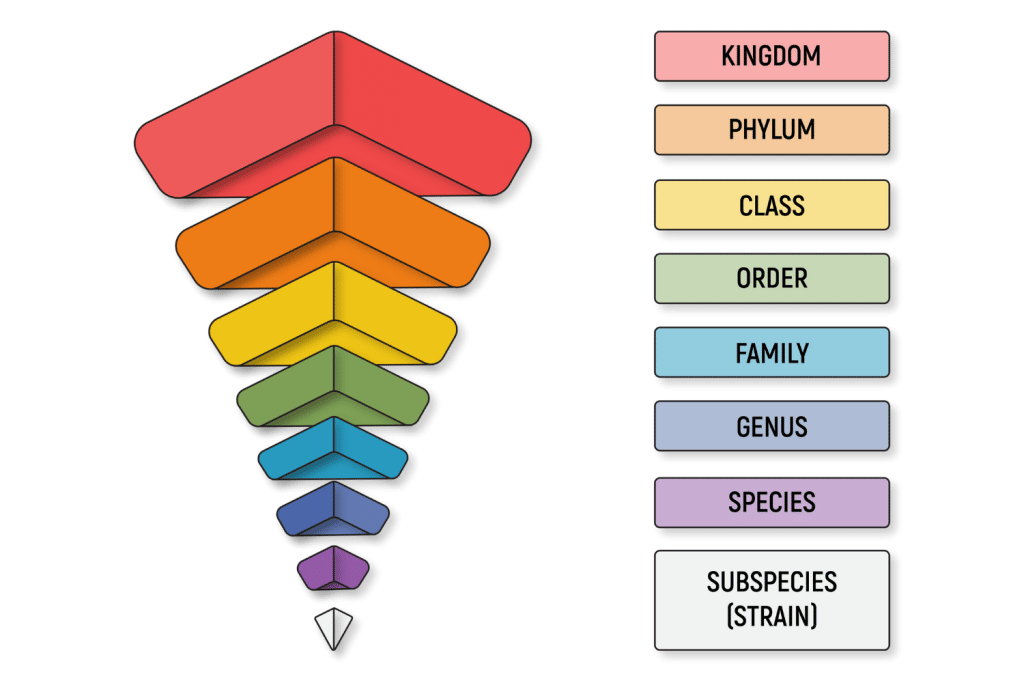
Trans Envy and Golden Teacher are two strains of Psilocybe cubensis. They look completely different, have different growth characteristics, and one is far more potent than the other. However, although they’re completely opposite, they are quite the same when it comes down to their underlying biology.
Strains occur organically in the wild. A species can produce different genetic variants to combat pests, diseases, and other environmental challenges over time. Humans create different strains for the same reasons. We crossbreed plant species to make more resilient crops and different animal breeds to develop better-working animals.
We also crossbreed genetic variants within a species to create traits that are beneficial to us. Look at the cultivated strains of magic mushrooms or the strains of cannabis, for example. We combine organisms with two qualities that we like to create “the best of both worlds.”

